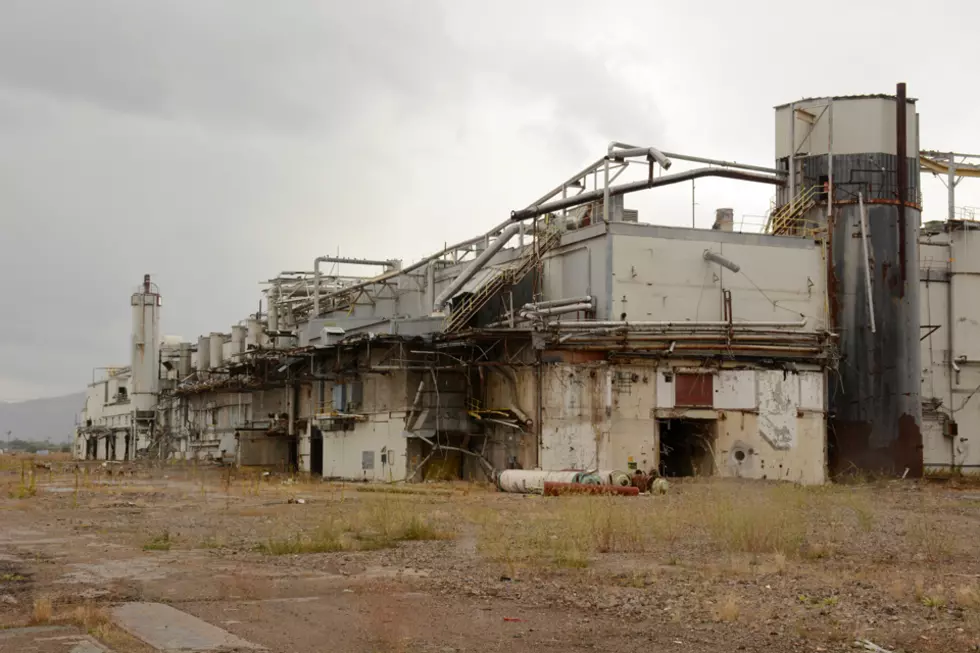
BNSF to remove contamination along rail spur through Smurfit-Stone site
A short sliver of land on the polluted Smurfit-Stone mill site will be cleaned this summer while the rest of the area waits for the Superfund process to proceed.
On Thursday, the Smurfit-Stone Mill Site Community Advisory Group listened to Allie Archer, Environmental Protection Agency project manager, explain why workers with Burlington-Northern Santa Fe Railroad and Montana Rail Link will be out on the mill site as early as April preparing to remove contaminated soil.
“This is an independent removal action. Removal options are separate from remedial actions,” Archer said. “If a respondent wants to work with the EPA, we’re not going to say ‘No, you can’t do work or cleanup.’ Instead, we work with that respondent to get them under an enforcement agreement so we can conduct oversight of the work and make sure it’s done appropriately.”
BNSF owns a short spur rail line on a right-of-way that leads from the main line into area where the mill buildings stand. It’s partly in Operable Unit 1, which includes agricultural lands outside the more polluted areas of the mill and settling ponds. However, part of the half-mile spur parallels Lacasse Lane off Mullen Road within the more polluted industrial area, known as Operable Unit 2.
At the end of February, the EPA and BNSF reached an agreement to allow BNSF remove 6 inches of topsoil within the right-of-way that extends 14 feet to either side of the spur, Archer said. The soil will be hauled to the Republic Services landfill in Missoula.
BNSF had done its own sampling of the soils along the line in 2015 and found levels of dioxin and furan contamination that exceeded industrial standards. That’s what prompted this action. Once the soil removal is complete, the right-of-way will be sampled again to confirm that dioxin levels are below industrial standards.
BNSF is able to move ahead because it’s a small-scale project that can be completed quickly compared to the rest of the site. The other landowners are waiting for the EPA to determine how much work must be done.
The advisory group members were somewhat surprised when they were notified of the agreement on March 22. While they’ve had to wait several years for removal action to begin on the site, it was unsettling to learn that one company is already moving ahead.
None could remember any mention of the railroad being involved, although Superfund Branch Chief Joe Vranka said he mentioned it a year ago. There’s definitely been no mention of it since then because the EPA was going through a legal review with the company, which can’t be discussed publically until it’s complete, Vranka said.
CAG member Jeri Delys still wondered why EPA updates couldn’t have mentioned that talks with BNSF are continuing without revealing specifics. The spur wasn’t included in the current EPA risk assessment. The CAG didn’t even know that BNSF is considered to be one of the potentially responsible parties that will be responsible for paying for the eventual cleanup.
“I know these are closed door proceedings. But I’m wonder if we can communicate better. A lot of us were caught a little flat-footed on it,” Delys said.
The group was a little worried that BNSF would be off the hook if other contamination were found after the cleanup.
Vranka said the agreement wasn’t a release from liability. But it’s likely that no more contamination would be found, Vranka said. He suspects the soil removal would likely bring levels down to a residential standard rather than just an industrial standard.
The higher levels of furans and dioxins were limited to the area adjoining the rail line. Even though the EPA doesn’t know the source, Vranka said similar contamination is found along rail lines everywhere.
“There are other potential sources of dioxin, whether it’s from treated ties or historic weed control operations,” Vranka said. “They’re not at levels that would suggest some other major source of dioxins.”
Some asked if the agreement was related to the cleanup of another BNSF property in Missoula. The railroad will be required to clean up its fueling and switching yard once the Montana Department of Environmental Quality finalizes the cleanup plan there.
Archer said the switching yard project is a state Superfund project while the Smurfit project is a federal Superfund agreement. The timing of the two actions was just coincidental, Archer said.
The EPA is taking public comment until April 27 on the proposed cleanup of the spur line. Contact Archer at 438-6255. In the meantime, workers may be out on the property doing surveying. BNSF would like to get to work removing soil this spring, Archer said.
Contact reporter Laura Lundquist at lundquist@missoulacurrent.com.
